Discover the world's top spice routes
Head straight to the fragrant source of some of our best-loved cook's essentials, from sweet Madagascan vanilla to fiery Mexican chillies. Lucy Kehoe goes on a culinary odyssey
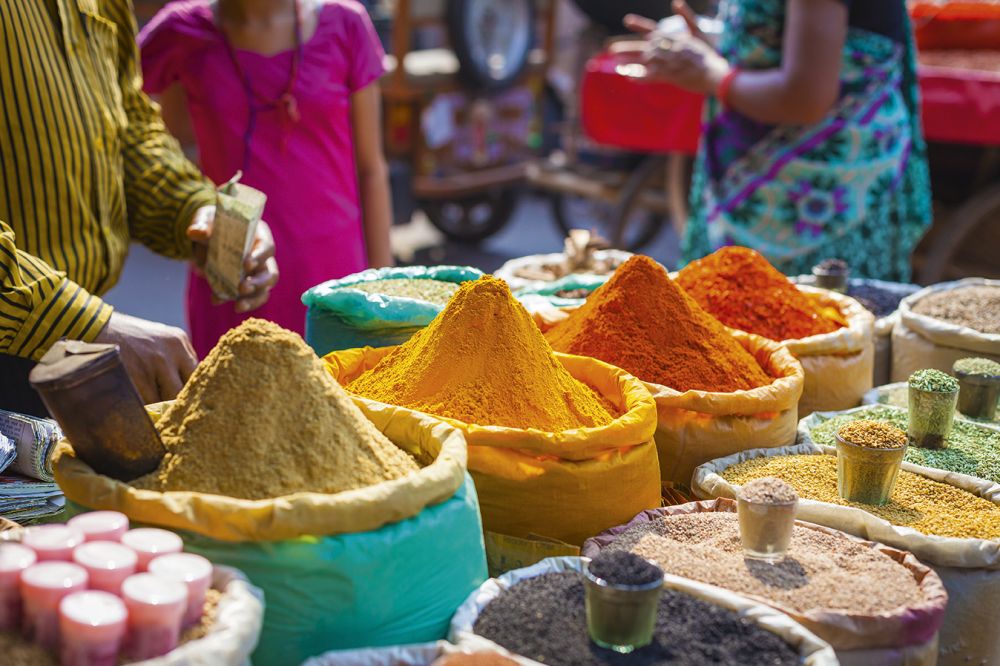
Head straight to the fragrant source of some of our best-loved cook's essentials, from sweet Madagascan vanilla to fiery Mexican chillies. Lucy Kehoe goes on a culinary odyssey
Journey deep into the interior of this wildlife-rich island to discover thriving plantations where each vanilla flower is still hand-pollinated by farmers, then make for the coast to savour traditional dishes flavoured and perfumed by native pods
Madagascar: the name alone conjures up images of thick-set baobab trees, unruly jungle and lemurs dangling, eyes like saucers, from vine-encased branches. It's an island of animals – both animated and actual – and lush, wet rainforest alive with thousands of peculiar creatures and plants all native to this broken fragment of the African continent.
It's also the heart of the world's vanilla production, sending out nearly 80 per cent of the global supply in tandem with it's neighbour Réunion. Beans are big business. Madagascar’s primeval interior is peppered with vanilla plantations, particularly in the northern Sava region, where the humid air grows thick with the spice's sweet, perfumed aroma as the harvest begins.
Drunk by the Aztecs in their chocolate, gobbled up in sweetmeats by English Elizabethan courtiers and a core ingredient in the original Coca-Cola recipe, vanilla’s grip on gastronomic history spans continents and timelines. Its complex flavour, which contains up to 500 different fragrance components, bewitches. But you wouldn't guess any of that from the fresh bean: green, tubular and completely unscented, the pods that grow on the thick, waxy vines of Madagascar's plantations are unrecognisable from the wizened, pungent bean pods we use in the kitchen.The pods are the fruit of an orchid which, in its native South America, can only be pollinated by miniature hummingbirds and a specific type of bee.
When conquistadors began planting the vine across the Spanish empire, their plans were thwarted when the transplanted vines wouldn't fruit. It took a couple of hundred years – and the canny intelligence of a 12-year-old slave living on Réunion (then called Île Bourbon), who went by the name of Edmond Albius – to devise a hand-pollination technique that would kick-start 200 years of vanilla cultivation.
Today, every delicate vanilla flower on Madagascan plantations must be hand-pollinated by farmers who religiously check their crops every morning for fresh blooms (flowers only last a day or two). It's slow business – vines take up to four years to produce their first fruits and pods can take up to nine months to mature and reach the desired flavours. There's still no exact way of knowing when the pod is ready, although some farmers swear the yellowed discolouration of a pod's lower section marks the harvest. Once picked, pods are left to macerate in alcohol for six months. Only after they're removed from the liquid do the familiar glimmering brown bean cases appear.
As one of the world’s most expensive spices, vanillais used sparingly in Malagasy cuisine, though plenty of sweetly infused rums are available at restaurants. Try Nosy Be for spice-laden menus: Le Papillon Avenue de L’independence serves its daily catch of tazar fish with a subtle vanilla sauce in the city’s Hell-Ville district, behind nondescript aquamarine frontage.
Madagascar's spice credentials tend to slip under most travellers' radars but a trip to the north-eastern corner of the island will take you to the centre of the industry. The Sava region has avoided Nosy Be's tourist boom, so accommodation can be a little rustic, but there's a chance to see rural Madagascar without the gloss. Take an organised tour, such as Original Travel's Best of Northern Madagascar trip and you'll be heading into untouched landscapes. The itinerary includes visits to Ambanja's farmers' market, where bundles of vanilla are sold beside coconuts, mangoes, papayas and other jungle fruits.
There are opportunities to visit Amber Mountain and Ankarana National Parks – packed with lemurs, including the elusive aye-aye, glimpsed on nocturnal walks – and a stay at the paradisiacal Tsara Komba Luxury Beach and Forest Lodge on an island off the Madagascan coast is also included.
Surrounded by both vanilla and cacao plantations – and a colony of black macaco lemurs – the intimate resort's six bungalows are built in a traditional style, sandwiched between white-sand beaches and rustling foliage. Its restaurant makes the most of fresh ingredients from the on-site organic garden, including vanilla, in Malagasy and French dishes served by candlelight on the beach, making for a suitably sweet ending to your Vanilla Island adventures.
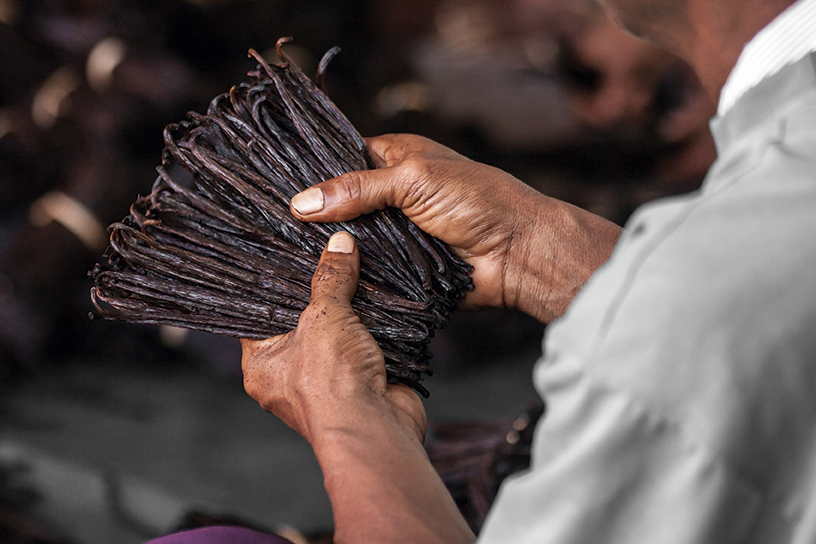
Whether you're seeking this precious spice on the farms where it's grown or in a bustling Marrakech souk, it pays to know the tricks to spotting the real deal
In the verdant Ourika Valley, a dusty 64km from Marrakech, dawn's subtle violet glow illuminates the blooming crocus crop. Morocco is one of the few countries on Earth with native saffron-growing regions, and the green fields of the Ourika Valley and, a little further out, the Taliouine area, are the crop’s heartlands. It’s a raw landscape – verdant only up to the mountain line, where the trees end and the jagged red peaks of the Atlas range begin, the odd minaret breaking an undulating horizon. But, under the tilled, unassuming earth, the region’s precious harvest rests.
Saffron has a long history. One of the spice route’s most valuable wares, it's said that Cleopatra would bathe in milk baths enriched by its golden threads, while archaeologists have found evidence of the spice being spread through the public squares of Roman cities to ward off disease. It has graced rice dishes in Spain and Persia, the bubbling bouillabaisse of Marseille, and been used to add its golden tone to Sweden’s saffron buns and Cornwall’s spiced cakes.
Today, the primary producers grow their crocuses in Spain, India and Iran, but ask any Moroccan farmer and they'll proudly claim that their crop is the world’s best, with an authoritative PDO certification to boot. This red-gold spice is a treasured commodity. Families batch-store their pickings as an investment for the future. The spice’s value comes from the delicacy of its once-a-year harvest. Saffron is the dried stigma of Crocus sativus, a variety unable to reproduce without human intervention. The plant requires cold, wet winters and hot summers and its flowers can only be picked on the morning of the day the blooms open, to prevent sun damage to the delicate stigma. After harvest, the stigma are carefully removed and dried, then stored in airtight containers. It takes up to 200 flowers to create just 1g of finished spice.
Moroccan pickers – normally women – check the saffron quality by pressing a stigma against a sugar cube. If it bleeds orange-yellow onto the cube, it’s considered up to scratch. Used sugar lumps are added to the pickers' mid-morning mint tea for an aromatic brew. If you visit, avoid the larger plantations – the smaller Ourika Valley farm Le Paradis Du Safran offers a chance to see harvesting in action in late-November and provides demonstrations year-round. Buy a ticket which includes a meal: you’ll be sipping saffron tea between rose beds and feasting on a traditional saffron-laced four-course meal of homemade bread, tagine and rice, all cooked in a traditional khobz clay oven.
In the Taliouine region, saffron makes a surprise appearance in some unexpected dishes. Alongside fragrant kefta meatballs and perfumed tagines, you’ll find a few lightly crushed threads added to chopped fruit or sprinkled through roz bil heleeb, a comforting rice porridge topped with coconut and almonds.
The difficulties in harvesting are why, on the hunt for Morocco’s best saffron, you’ll need to sharpen your elbows when stalking the alleyways of Marrakech’s souks. Ignore the pyramids of burnished ras el hanout and Berber spices and look, instead, towards the shady corners, seeking out a glimmer of glass jars. Real saffron is too precious for the chaotic bustle of the souk floors – it’s hidden away and you’ll have to ask to see what’s on offer. The best should have a deep-red colour. Like all luxury goods, the golden threads have their fair share of counterfeit impostors, so it pays to explore with an expert. Souk & Co offers bespoke tours. Lead guide (and proud Berber) Hassan has intimate knowledge of the best providers and can also arrange a visit to private farms in Taliouine, complete with a saffron-rich lunch. If you’re exploring the souks alone, confirm the threads are the real deal with a sniff – true saffron has a spicy, sultry aroma that just can’t be matched by its lesser doppelganger, safflower.
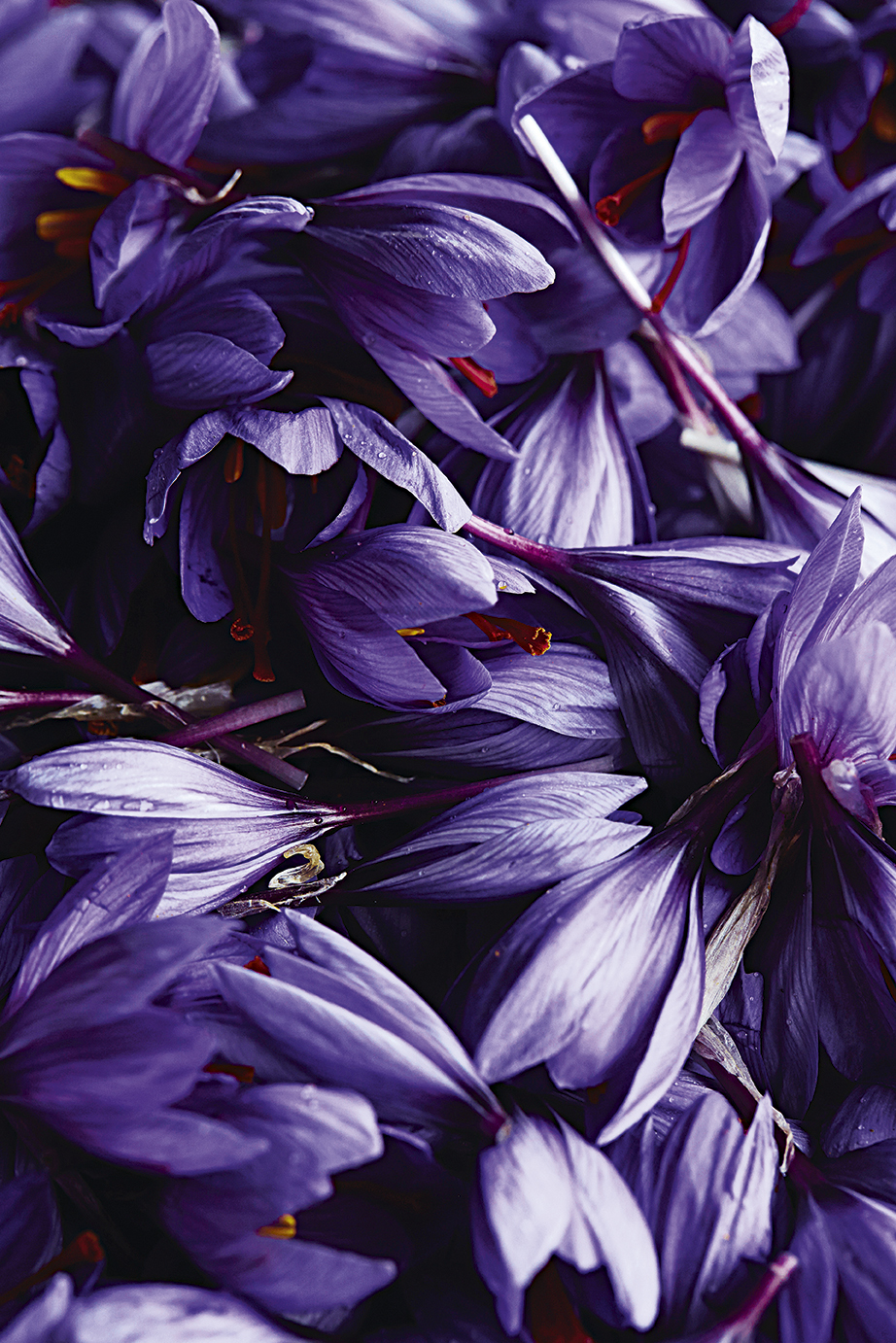
While not native to India, the country now grows 70 per cent of the world's cumin supply, and there's nowhere better to try it than in this fascinating northern state
Magnificent, sky-tickling palaces and historic forts in all shades of ochre jostle for travellers' attention across Rajasthan. Between the state’s historic cities and their scalloped balconies and spiralling temple towers, however, rural tracts offer a softer beauty – the quiet landscapes of cumin fields, filled with low-lying, slender green shrubs whose cloud-like white blooms wave in the hazy sunshine.
Warm and robust, the spice’s flavour infiltrates Rajasthan’s cooking pots, enhancing expertly cooked vegetables, joining chilli and sweet neem leaves in kadhi, a spiced yoghurt curry, and lacing mirchi vada, fried chilli street snacks which come stuffed with cumin-spiced potato mash. A Rajasthan lassi will likely arrive flavoured with roasted cumin seeds, a splash of citrus added to play off the earthy notes.
This bitter spice, made by grinding the dried seeds of the plants, isn’t native to India. Originally believed to have come from the Mediterranean, cumin's first recorded use was in the Middle East, but the tiny seed found its way across vast oceans as early as the second millennium BC. In ancient Greece it was used as a pepper-like seasoning, records suggest 13th-century English households paid their rent in the spice, and traces of the seeds have been found in tomb excavations in Egypt.
There are even a few mentions of it in the Old and New Testaments. Wherever cumin has landed, it has meshed itself into the local cuisine, dancing through Western Chinese cookbooks, Syrian breakfast foul and Mexican mole. In India, jeera (as they call cumin) likely arrived with Arab spice traders traversing the Persian Gulf. Now, across western Rajasthan, the blousy cumin flowers decorate rural landscapes, blurring into the native flora.
The cumin plant is a member of the parsley family and its delicate blooms aren't dissimilar to the cow parsley heads of British hedgerows. Once seeded, plants are uprooted and dried by farmers, who beat the heads by hand to separate the seeds. Despite only a tenth of its harvest ever leaving the country, India grows nearly 70 per cent of the world’s cumin and its popularity in the country makes certain that you’re as likely to see it growing in kitchen gardens as in the seemingly endless fields.
At the luxurious Suján Sher Bagh tiger camp on the border of the state’s
Ranthambore National Park, hungry big-cat spotters arrive back at camp to a dinner of vegetables grown in the camp's garden. Yellow carrots in ghee with cumin and coriander make use of the spice section, while evenings under canvas end with a refreshing cup of jal jeera, a herby, water-based drink made from coriander, mint and the pick of the on-site cumin crop.
Most of Rajasthan’s commercially grown cumin ends up in Delhi’s Khari Baoli, the city’s spice bazaar, which is packed with towers of tamarind, cardamom and chilli – and frenzied vendors. With its symphony of motorbike revving and bellowed price drops, the largest spice market in the world offers a sensory overload best experienced from the back of a rickshaw or at the side of an expert. On Scott Dunn’s 12-night Rajasthan trip, the perfumed market is traversed by foot, before you head off into the countryside towards the historic sites of Jaipur for visits to the Amber Fort and City Palace.
A stop at Udaipur promises traditional cooking demonstrations, where you'll learn first-hand how to use India’s spice rack, with tips on tempering spice mixes and balancing heat and flavour. If you’re hoping to explore Rajasthan’s rural farmland, a trip to a Jalore cumin farm can be incorporated.
Less enamoured by the city buzz? Try Rajasthani cuisine at Chanoud Garh chanoudgarh.com – a 300-year-old fort that houses an aristocratic hotel run by 13th-generation royal descendants. The hotel is surrounded by farmland, so evening drives to see sunsets over the nearby salt flats include a chance to explore farms and encounter local growers. Of three restaurants, the hotel’s ‘Mama’s Kitchen’ dives the deepest into regional cuisine, with specialities like chakki ki sabzi curry and smoked spiced lamb making ample use of spices sourced from the area.
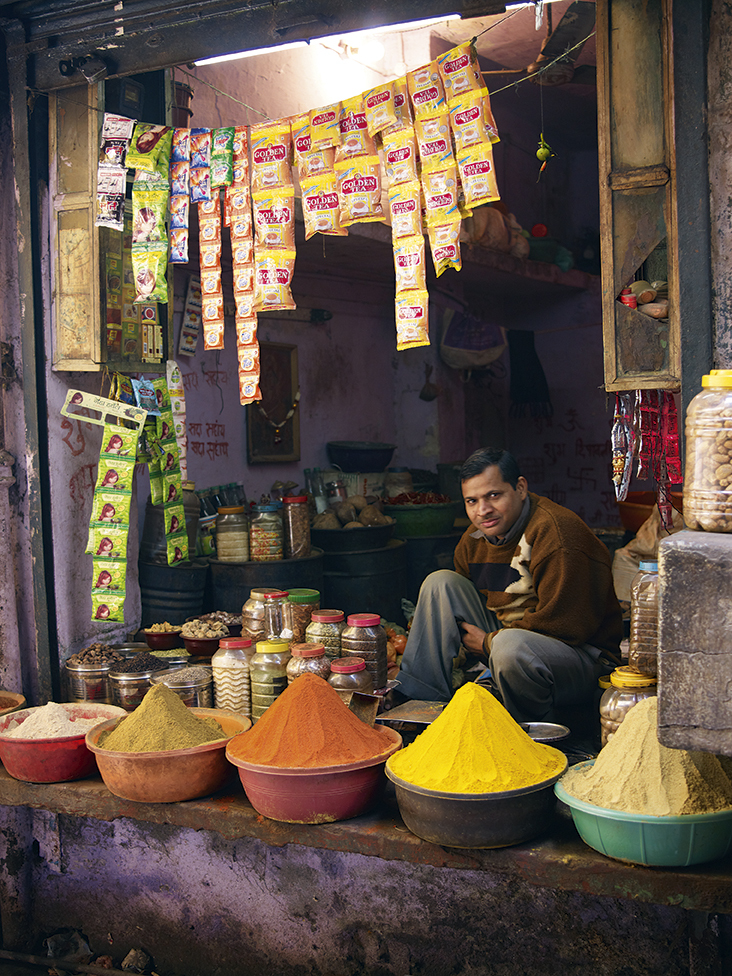
Nutmeg is revered on this captivating Caribbean island, where a highlight of any active traveller's visit will be a hike to the spice farms that sit between volcanic hills overrun with jungle flora, colourful birdlife and darting neon lizards
Nutmeg is so much a part of the Grenadan DNA that it even features on the national flag, on the left-hand side, wrapped in primary colours. The spice is Grenada’s national product and a source of immense pride on the volcanic isle. Only 34km long and 19km wide, this diminutive Caribbean island grows more of the spice per hectare than anywhere else in the world, its plantations providing over 40 per cent of the global nutmeg supply.
With aromas of cinnamon, vanilla and clove lingering around kitchen doors, nutmeg gets into everything – a little grated here and there to add warmth to drinks, dishes and even homeopathic painkillers, sold at street-side stalls. Take a drink at the island’s upmarket Calabash Hotel and you’ll be sipping on a ‘Respect the Nutmeg’ libation, a blend of rum, nutmeg syrup, liqueur and grapefruit soda. Inside the cool gloom of local rum shacks, throat-tightening babash – a powerful home-brewed tipple – is infused with nutmeg in the bottle. Stroll among the colourful parasols of the capital St George’s Market Square and you’ll pass tubs of the spice standing to attention, ready for sale. Persistent bargaining is part-and-parcel of the market melee, so be prepared to haggle.
Nutmeg trees arrived in Grenada in 1843, the seeds (which we know as nutmeg) already a valuable trading commodity on the world's spice routes. Early Arab traders touted its musky flavour as an aphrodisiac, while Elizabethan aristocrats carried pouches of it, convinced it was a miracle barrier to catching the plague. Native to Indonesia's Banda Islands, the tree was first imported by the British, following years of insalubrious conflict between bickering colonial interests. The bloodshed didn't end there: arriving, complete with soil, the trees were tended to by enslaved labourers. When the British left last century, the nutmeg stayed in Grenada.
To see nutmeg growing takes a little persistence. Produced by dark-leafed evergreen trees, the fruit is spherical, around the size of a rounders ball, and a speckled mellow yellow in colour. Hiking trails through the jungle often border plantations but trips are arduous – if you’re keen, organise a walk to the Calbony Hot Sulphur Springs in the north, where the promise of a soothing, post-walk soak in the natural hot sulphur pools provides good motivation. Otherwise, join a spice garden tour for a nutmeg history lesson. Run by a local horticulturist who has represented Grenada at RHS Chelsea shows, Caribbean Horizons’ regular guided walks (from £60pp) come crammed with botanical insight.
At the Nutmeg Processing Station in the western fishing village of Gouyave, run by a local cooperative, you can watch workers separating the fruit from the seed, drying it and packing it into bulging burlap sacks. No part of the nutmeg goes to waste – the pericarp (fruit) has to be removed, followed by the red membrane wrapped around the inner seed, which we know as mace, leaving the seed – or nutmeg.
Traditionally, the fruit is used in jams, syrups and jellies. Morne Délice Nutmeg Jam, an island classic, is sold all around Grenada, and best tried slathered across a slice of toast. Mace – lighter and less heady than the seed itself – is paired with delicate flavours like fish, and found in the Grenadan favourite crab back – fresh, flaky cooked land crab meat with a cheese sauce, spices and cream, all served in the crab’s shell.
Nutmeg arrives in sauces and meat rubs, puddings and milky drinks. Look for sweet potato pone, a spiced pudding with coconut notes and warm, nutmeg flavour. At House of Chocolate on Young Street, St George's, you’ll find the island’s best-selling nutmeg ice cream.
And, if you do pick up a pack, don’t be too heavyhanded with the grating. Nutmeg contains myristicin, a natural compound said to have mind-altering affects if ingested in large doses. Stick to some advice doled out by a stiff-lipped medical school in the Middle Ages: 'One nut is good for you, the second will do you harm, the third will kill you.' A pinch will do just fine.
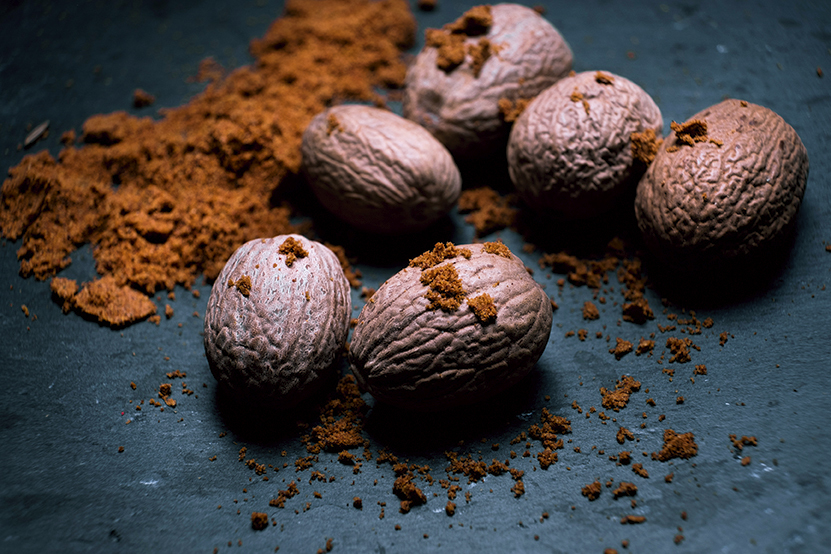
An essential component of Mexican cuisine, chilli peppers are used in everything from crispy grasshopper snacks to suckling-pig tacos. Sample countless, fiery varieties in Oaxaca, then take a cookery class and learn how to use them like a pro
Looking across the chilli-pepper farms of Oaxaca state is like viewing a Martian landscape. Majestic rock formations rise, table-like, across the horizon, layers of rusty stone capped with vegetation. Below, in the plateaus, the soil is the same pale oxblood shade, interspersed with green plants. Like wine, chilli peppers are shaped by the landscape they grow in, their taste dictated by terroir. And what red grapes in Bordeaux are to France, chilli peppers in Oaxaca are to Mexico.
The country – itself a pepper-shaped slice of Central America – grows nearly two million tonnes of chilli annually, mostly in Oaxaca's mountains. Farmers move plants higher up the terrain as they develop, to ensure the intense sun ripens the crop. The harvest is rarely used raw – instead, peppers are smoke-dried over low flames. Some are ground into chintextle, a paste made with pumpkin seeds, garlic and dried shrimp, and used to stuff potatoes or spread over crunchy tortilla tlayuda. The rest are loaded up and taken to Oaxaca City.
In the capital, the local milo (mill) grinds the harvest into flakes and powders, the milling machine throwing nostril-tickling particles into the air. Whole, flaked or powdered, the chillies are packed off to the city’s markets – chilhuacle negro, costeñosare, chilcostle and chilli de árbol – in fiery shades ranging from a dangerous purple-black through to lipstick reds and burnished, brooding yellows. For Mexicans, chillies aren’t just about heat, but offer earthiness, smokiness, fruitiness and flavour on the plate. Wander into the Central de Abasto Market or the Mercado Benito Juárez and you’ll be jostled by chefs and mamás alike, all on the hunt for hard-to-come-by favourites: paper sacks crammed full of taviche peppers, or the chilhuacle, which is grown on just six farms in the area.
Endemic to the state is the pasilla chilli, a deep-red (almost black) variety which offers a meaty, spicy taste that burns your throat and brings tears to your eyes. Temper the heat and the buzz of Oaxaca’s markets with a guided tour around the best stalls selling chapulines (chilli-flavoured grasshoppers) and tacos. Responsible Travel’s nine-day food adventure includes trips to city markets, where you’ll be rubbing shoulders with pioneering Oaxacan-born chefs.
This is Mexico’s food city and the hotbed of culinary talent is fuelled by the produce rolling in from the state's far-reaching corners: seafood from the southern, sea-facing side and tropical fruit from the luscious border with Veracruz. In the jagged hills that surround the chilli farms, native herbs grow – hoja santa, epazote and pitonia. But every plate is furnished with a chilli pepper. At the airy rooftop Casa Oaxaca el Restaurante Alejandro Ruiz’s team pounds tomatoes, herbs and chillies in front of you, crafting a spicy salsa. At the much-lauded Origen origenoaxaca.com in the Centro district, Rodolfo Castellanos’s menu includes chilhuacle chilli, watermelon and pork atop a tortilla served with black beans, pasilla chilli and avocado. At Pitiona Calle de Ignacio Allende 114, Ruta Independencia the moustached José Manuel Baños RodrÍguez serves chilli-marinated prawns and suckling-pig tacos doused in jalapeño sauce. Whatever the garnish, the backbone stays the same: corn, chillies and beans, a menu dreamt up in the Mixtec era and preserved to the modern day.
Take mole. It might be Mexico’s most iconic dish but in Oaxaca – 'the land of the seven moles' – it stretches beyond the basics. Here, the name refers to an unrecordable thick sauce that changes ingredients as often as it changes its suffixed adjective. Mole chichilo arrives as a beef-stock sauce, packed with chillies. Mole Amarillo employs the amber-toned chillies of the same name. At El Sabor Zapoteco 00 52 951 516 4202, Reyna Mendoza will teach you how to make one of Oaxaca's most complex moles – mole negro. A celebratory dish, the recipe includes over 20 chillies, including a handful of vicious-looking, chocolate-brown chilhuacle negro chillies. Toasted over an open fire, they add to the mole's midnight shade and roasted, fiery flavour.
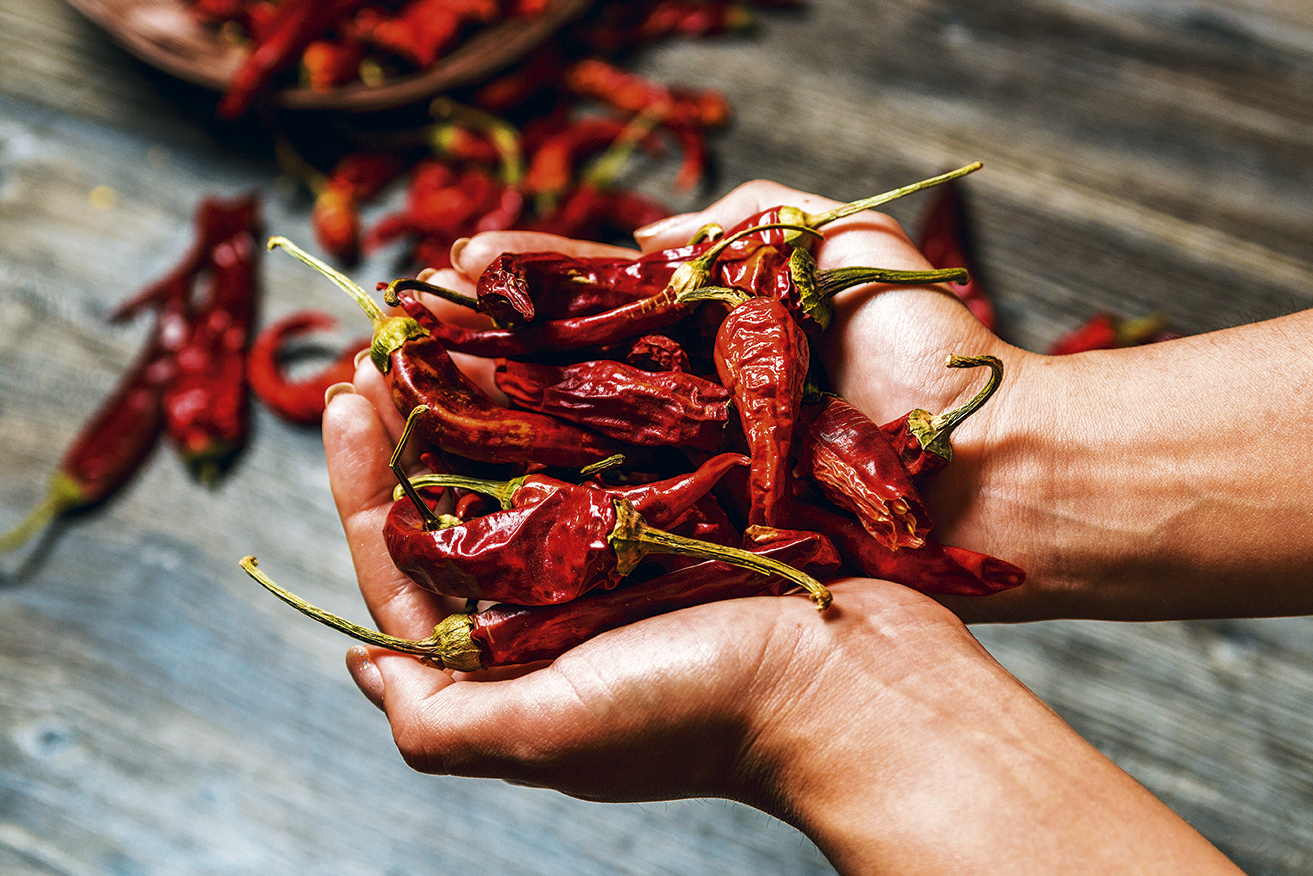
Subscribe and view full print editions online... Subscribe